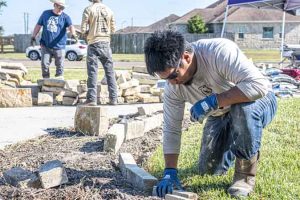The Har Ki Dun trek is one of the most enchanting treks in the Garhwal Himalayas, Uttarakhand, India. Known for its panoramic views, lush greenery, and rich cultural heritage, this trek attracts adventurers and nature lovers from around the world. In this detailed guide, we’ll delve into everything you need to know about the Har Ki Dun trek—from its route and difficulty level to the best time to visit and what you can expect to see along the way.
Overview
Location
The Har Ki Dun valley is nestled in the Garhwal Himalayas within the Govind Ballabh Pant National Park. The trailhead begins at Sankri, a small village in Uttarkashi district.
Altitude
The highest point of the trek is Har Ki Dun, which sits at an altitude of approximately 3,566 meters (11,700 feet) above sea level.
Duration
The trek typically takes about 7 to 8 days, depending on the chosen itinerary and pace.
Difficulty Level
Moderate. While the trek is accessible to beginners, a basic level of fitness is required due to the long distances and varying altitudes.
Best Time to Visit
The best times to embark on the Har Ki Dun trek are during the summer (April to June) and post-monsoon (September to November) seasons.
- Summer (April to June): During this period, the weather is pleasant, and the valley is in full bloom with a variety of flowers. The clear skies offer spectacular views of the surrounding peaks.
- Post-Monsoon (September to November): The post-monsoon season brings crisp, clear weather and stunning views of snow-capped mountains. The trails are also less crowded during this time.
Trek Highlights
Scenic Beauty
The Har Ki Dun trek is renowned for its stunning landscapes. Trekkers will pass through dense forests of pine and deodar, picturesque meadows, and traditional Himalayan villages. The valley is often called the “Valley of Gods” due to its serene and unspoiled natural beauty.
Cultural Experience
The trail passes through ancient villages like Sankri, Taluka, and Osla, where you can experience the unique culture and traditions of the local communities. The wooden houses, temples, and hospitable villagers add a rich cultural dimension to the trek.
Flora and Fauna
The trek offers a chance to see a variety of flora and fauna. The region is home to species like the Himalayan black bear, langur, and various birds. In spring and summer, the valley is adorned with vibrant wildflowers.
Mountain Views
The trek provides breathtaking views of some of the major Himalayan peaks, including Swargarohini, Bandarpoonch, and Black Peak (Kalanag).
Detailed Itinerary
Day 1: Arrival in Dehradun
Your journey begins with your arrival in Dehradun, the capital city of Uttarakhand. From here, you will drive to Sankri (around 200 km), which serves as the base camp for the trek. The drive takes you through scenic landscapes and quaint hill stations.
Day 2: Sankri to Taluka to Seema
From Sankri, a short drive will take you to Taluka, where the trekking adventure begins. The trail to Seema (also known as Osla) is a gentle ascent through dense forests and along the Supin River. This 14 km trek will take about 7-8 hours.
Day 3: Seema to Har Ki Dun
The trail from Seema to Har Ki Dun is one of the most picturesque sections of the trek. As you ascend, you’ll pass through lush meadows and forested areas. The 12 km trek takes approximately 6-7 hours.
Day 4: Exploration Day at Har Ki Dun
Spend the day exploring the Har Ki Dun valley. You can visit the Jaundhar Glacier, enjoy the panoramic views of the surrounding peaks, or simply relax and soak in the beauty of the area.
Day 5: Har Ki Dun to Seema
Retrace your steps back to Seema. This downhill trek offers a different perspective of the scenery you passed on the way up.
Day 6: Seema to Taluka to Sankri
Trek back to Taluka and drive to Sankri. Spend the night in Sankri, reflecting on the incredible journey you’ve just completed.
Day 7: Sankri to Dehradun
Drive back to Dehradun, marking the end of your trekking adventure.
What to Pack
Clothing
- Lightweight, moisture-wicking clothing
- Warm layers (fleece, down jacket)
- Waterproof jacket and pants
- Sturdy trekking boots
- Woolen socks, gloves, and hat
Gear
- Trekking poles
- Backpack (50-60 liters)
- Sleeping bag (suitable for -10°C)
- Headlamp with extra batteries
- Sunglasses and sunscreen
Miscellaneous
- Personal first-aid kit
- Water bottles and purification tablets
- Snacks and energy bars
- Camera and extra batteries
Tips for Trekkers
- Fitness Preparation: Engage in regular cardio exercises, strength training, and hiking practice before the trek to build your stamina.
- Acclimatization: Take your time to acclimatize to the altitude. Drink plenty of water and avoid alcohol.
- Respect Local Culture: Be respectful of local customs and traditions. Ask for permission before taking photographs of people or their homes.
- Leave No Trace: Carry all your waste back with you. Do not litter the trail or the campsites.
- Hire a Guide: Even though the trail is well-marked, hiring a local guide can enhance your trekking experience with their knowledge of the
region, culture, and natural surroundings.
Conclusion
The Har Ki Dun trek is a perfect blend of natural beauty, cultural richness, and adventure. Whether you’re a seasoned trekker or a novice seeking to explore the Himalayas, this trek offers an unforgettable experience. With its breathtaking views, diverse flora and fauna, and the warm hospitality of the local communities, Har Ki Dun is truly a trekker’s paradise. Prepare well, respect nature, and immerse yourself in the serene beauty of the Valley of Gods. Happy trekking!




